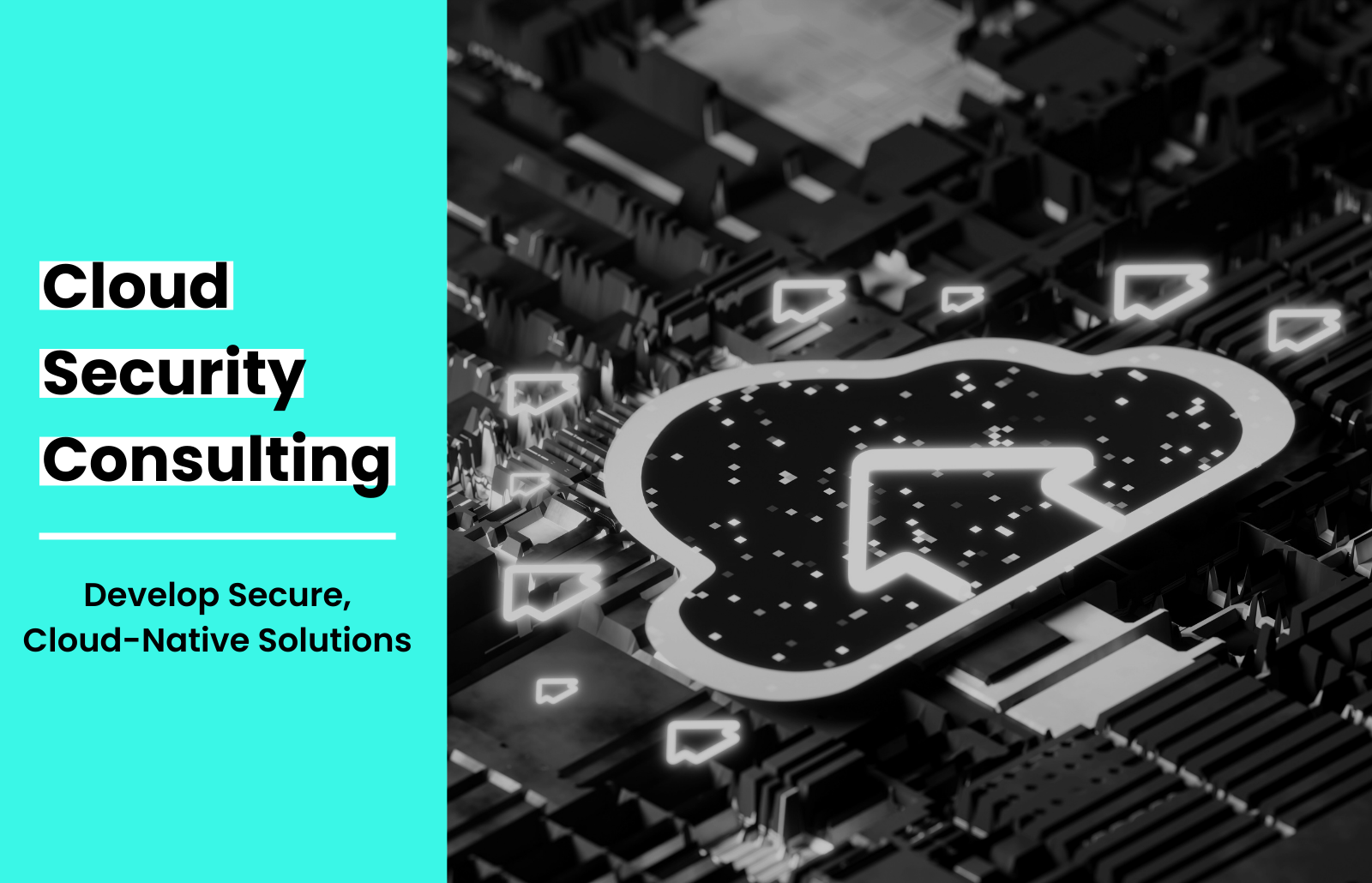Technology continues to revolutionize business operations and cloud computing has quickly become the backbone of modern enterprises, providing unparalleled scalability and flexibility. But with its convenience comes the responsibility of safeguarding sensitive data and applications on the cloud. In this blog, we will explore all facets of security associated with cloud services including network security, application security, cloud data security, identity and access management, cloud infrastructure security, etc. and the role of cloud native security services.
What is Cloud Security?
Cloud security refers to the technologies, policies and controls put into place within cloud environments that help ensure data, applications and infrastructure remain safe from attack or degradation. It encompasses various elements that must be in place such as:
- Data security: Preserving sensitive information against unapproved access, disclosure, modification and destruction.
- Application security: Securing applications against vulnerabilities, exploits and malicious attacks.
- Infrastructure Security: Safeguarding the security of cloud servers, networks and storage systems.
- Identity and Access Management (IAM): Authorizing access to resources within the cloud based on user roles and permissions.
- Compliance: Assuring compliance with data protection regulations and industry standards.
Key Areas of Cloud Security
Cloud security consists of a wide range of technologies, policies, and controls designed to protect data, applications, and infrastructure within the cloud environment. It can be broken down into several key areas:
Cloud Application Security
Application security refers to the practices, tools, and policies designed to protect applications and data that reside in the cloud. As organizations increasingly move their applications to cloud environments, ensuring the security of these applications becomes paramount.
API Security:
Implement strong access controls for APIs to prevent unauthorized access and misuse. Encrypt the data transmitted through APIs to protect it from interception.
Secure Development Practices:
Implement DevSecOps into the software development lifecycle (SDLC) from the beginning, addressing security issues proactively. Regularly review the code in the pipeline for security vulnerabilities and use static analysis tools to identify potential issues.
Cloud Network Security
Cloud network security encompasses the technological, policy, management, and process security measures employed to safeguard public, private, and hybrid cloud networks. It encompasses:
Virtual Private Clouds (VPCs):
VPCs allow organizations to set up isolated, private networks within the cloud that offer enhanced network security by isolating resources for authorized users only and preventing lateral movement if there is ever an incursion into one of those private areas.
Firewalls and Intrusion Detection/Prevention Systems:
These tools serve as gates, monitoring and controlling network traffic to protect networks against malicious threats such as hackers. IDS/IPS systems detect potential security risks to add another line of defense against such activities.
Secure Data Transmission (SSL/TLS):
Encrypting data in transit is crucial for preventing unauthorized interception. Secure Sockets Layer (SSL) and Transport Layer Security (TLS) protocols ensure the confidentiality and integrity of data as it travels between the user and the cloud server.
Cloud Server Security
Cloud servers are responsible for running applications and storing data in the cloud. Protecting these servers is critical to maintaining security and compliance. This includes:
Patch Management:
Regularly updating and patching cloud servers is essential to address vulnerabilities and protect against potential exploits. Automated patch management systems streamline the process, ensuring servers are up-to-date with the latest security patches.
Server Hardening:
Implementing server hardening measures involves configuring servers to minimize potential security risks. This includes disabling unnecessary services, restricting user privileges, and applying security policies to enhance the server’s overall security posture.
Cloud Data Security
Data is the lifeblood of most organizations, and cloud data security is crucial for protecting sensitive information. This includes:
Data Encryption:
Implementing data encryption mechanisms for data at rest and in transit is fundamental to cloud data security. Advanced encryption algorithms and key management systems ensure that even if data is compromised, it remains unreadable without the appropriate decryption keys.
Secure Data Transmission (SSL/TLS):
Encrypting data in transit is crucial for preventing unauthorized interception. Secure Sockets Layer (SSL) and Transport Layer Security (TLS) protocols ensure the confidentiality and integrity of data as it travels between the user and the cloud server.
Data Loss Prevention (DLP):
DLP solutions help organizations monitor, detect, and prevent the unauthorized transfer of sensitive data. These systems provide granular control over data access and movement within the cloud environment.
Regular Data Backups:
Creating regular backups of critical data ensures quick recovery in the event of data loss or a security incident. Cloud-based backup solutions offer scalability and accessibility, enhancing data resilience.
Identity and Access Management (IAM)
IAM plays a critical role in managing access to cloud assets. By defining and managing user roles and permissions, companies can ensure that only authorized users have the necessary access, reducing the risk of unauthorized access.
Securing access to cloud resources is essential for stopping unauthorized users from gaining access to sensitive information or compromising critical systems. This also includes:
Multi-Factor Authentication (MFA):
MFA adds an additional layer of security by asking users to provide different forms of identification before accessing cloud resources. This reduces the risk of unauthorized access, even if login we compromise credentials.
Role-Based Access Control (RBAC):
RBAC assigns certain roles and permissions to users based on their responsibilities within the organization. This fine-grained access control ensures that individuals only have access to the resources necessary for their roles.
Cloud Infrastructure Security
Cloud infrastructure refers to the underlying software and hardware that support cloud services. Securing this infrastructure is essential for ensuring the overall security of the cloud environment. This includes:
- Network segmentation: Dividing the cloud network into smaller segments to limit the spread of attacks.
- Security incident and event management (SIEM): Collecting and analyzing security events from across the cloud environment to detect and respond to threats more effectively.
Cloud Security Services
Cloud providers offer a range of security services that can help organizations improve their cloud security posture. These services include:
- Security posture management (SPM): Assessing and managing cloud security risks.
- Cloud access security broker (CASB): Providing centralized control over access to cloud applications and data.
- Vulnerability scanning and remediation: Scanning cloud resources for vulnerabilities and providing recommendations for remediation.
- Security incident and event response (SIR): Assisting organizations in responding to security incidents.
Zartis Cloud Security Consulting Services
Zartis offers a comprehensive suite of cloud security consulting services designed to address your unique needs at every stage of your cloud journey:
- Cloud Security Assessments: We conduct thorough assessments of your cloud environment to identify security vulnerabilities, configuration risks, and compliance gaps.
- Cloud Architecture Design: We help you design and build a secure cloud architecture that meets your specific security requirements and business goals.
- Cloud Security Implementation: We assist with the implementation of security controls, procedures and policies to safeguard your cloud environment.
- Identity and Access Management (IAM): We help design and implement robust IAM solutions to ensure only authorized users have access to your cloud resources.
- Data Security: We provide solutions for data encryption, data loss prevention (DLP), and data backup and recovery to protect your sensitive information.
- Security Incident and Event Management (SIEM): We implement SIEM solutions to provide real-time visibility into your cloud environment and enable timely response to security incidents.
- Security Awareness and Training: We provide comprehensive security awareness training for your employees to enable them to identify and avoid cyber threats.
- Ongoing Security Management: We offer ongoing security management services to monitor your cloud environment, update security controls, and respond to emerging threats.
Conclusion
As businesses increasingly turn to cloud services for their operations, a comprehensive cloud security strategy becomes essential. From network to server security and data protection measures such as access controls and infrastructure protection. Organizations must adopt a multilayered approach in order to protect their digital assets. Cloud security services further boost overall security posture with expert knowledge and advanced solutions, by prioritizing cloud security while remaining aware of evolving threats they can leverage the advantages of cloud computing while maintaining confidentiality, integrity and availability of their data and applications.





